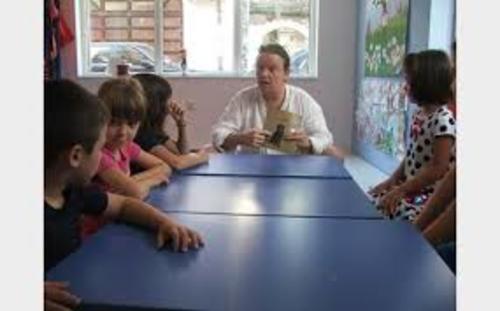RESOURCES

CLIL Teacher Training
CLIL TEACHER TRAININGI've spent much of the period of my freelance consultancy working with teachers who have been told either by their school or their ministry of education to teach their subject through English, or other foreign language. Personally, I have a passion for learning foreign languages and know from experience that the best way to learn a foreign language is to be immersed in a topic of interest with people fluent in that language. It's the reason I learned to say 'I like spicy food' very quickly in Chinese while working in China, for example. It's also the reason that the Austrian Ministry of Education has legislated for young Austrians to learn part of their curriculum through English. I've been designing, writing and delivering CLIL inservice training for teachers all over the world since the year 2000. In any curriculum subject taught in any foreign language the challenges will be any one or more of the following: conceptual challenges, procedural challenges, linguistic challenges. These three dimensions make up the three dimensions of 3D CLIL. All the professional development I do focuses on a discussion and exploration of these three dimensions with teachers. Some learners may need more support with understanding a concept, other learners may need more support in speaking in the foreign language. All of these considerations in these three dimensions raise organizational questions for teachers. CLIL Training has to be about examining classroom practice and making decisions about future progression of learning based on that initial examination. Teachers learn how to see what support (conceptual, procedural, linguistic) their learners need, and devise future lessons accordingly. It's an ongoing, cyclical process which takes some skill to perfect.
This training is also based on the belief that young people learn the curriculum in a foreign language best when:
- teachers are skilled in providing language support where needed and removing it where it's not needed
- learners are asked to do something meaningful in the foreign language
- what learners are asked to do is challenging
- learners are given a lot of opportunity to speak
- learning moves from 'private talk' time to 'public talk'
I'm convinced that all young people can learn the curriculum through a foreign language. In Europe there are many examples of this already happening. Holland is a famous such country. My belief goes to the extent that I opened a school in my home town of Plovdiv, Bulgaria. The school is a CLIL school and is called Anglia School (www.anglia-school.info). Anglia School opened in 2012 offering an immersive education curriculum in English to children from 2 to 7 years. At the time of writing, March 2015, we now have a hundred children up to the age of 10 and we are planning to double the number of classes we offer in 2016 including offering CLIL classes to adults (Photography English).
10 CLIL Courses offered
All of these courses are available as Erasmus Plus courses which are offered at Anglia School in Plovdiv, European Captial of Culture 2019. Come and do CLIL and soak in the history and culture around you!
- Subject–specific CLIL – Hard CLIL for subject teachers (Geography, History, Biology, Physics, Chemistry, Maths others)
- Secondary CLIL (13 to 18) - Soft CLIL for Language Teachers
- Team CLIL – CLIL Training designed for pairs of one subject and one language teacher from the same school
- Managing CLIL – CLIL Training designed for department heads, deputy heads and school heads with an interest in implementing CLIL effectively and sustainably.
- Intercultural CLIL – Developing Intercultural Communicative Skills through the School Curriculum
- International School Projects – Prepare your school for a curriculum based international project AND meet potential partners with similar interests
- English for very young learners (2 to 4) – Developing Language with Child Development
- Pre-school CLIL (4 to 6) – Learning by Doing (Science, Maths, Art, Action games, Story, Music, Drama Activities in English)
- Juniors CLIL (7 to 12) – Linking Language Learning with the Junior School Curriculum
- Writing CLIL Materials - from worksheets, through listening materials, writing, presentation activities to writing textbooks and curriculum designing.
I also do inservice training in 'pure' foreign language teaching and learning, but you may have guessed that I'm particularly inspired by contexts where school education is happening in a second or foreign language. If I can offer your school, faculty, ministry or other institution some advice in implementing a CLIL approach, please don't hesitate to get in touch (keithpkelly@gmail.com). I'd be glad to help.
Putting CLIL into Practice - Flipped Training
This is an innovative in-school professional development in CLIL for practising teachers where the focus is directly on teacher needs.
General overview
- short informative and comprehensive theoretical input in plenary bursts
- one-to-one intensive collaborative work on specific subject needs
- closely facilitated research work (and/or assignment work if demanded by local training)
- classroom (joint) peer observations and feedback
- ongoing up-to-date theoretical input with online archived content for reference
Putting CLIL into Practice - CLIL for English Teachers
I've done a number of trainings for English teachers in different countries with a focus on CLIL. The focus of the meetings depends on local expectations and needs. I put together this flier on CLIL for ELTs summarising the details.
FACTWorld Journal 15 is dedicated to CLIL for ELTs and represents the minutes of the Pre BETA Conference SIG day on CLIL for 2015.
Cooperation between English teachers and content teachers is at the heart of teacher development meetings in Austria and the focus of an article I wrote for the TeachingEnglish website.